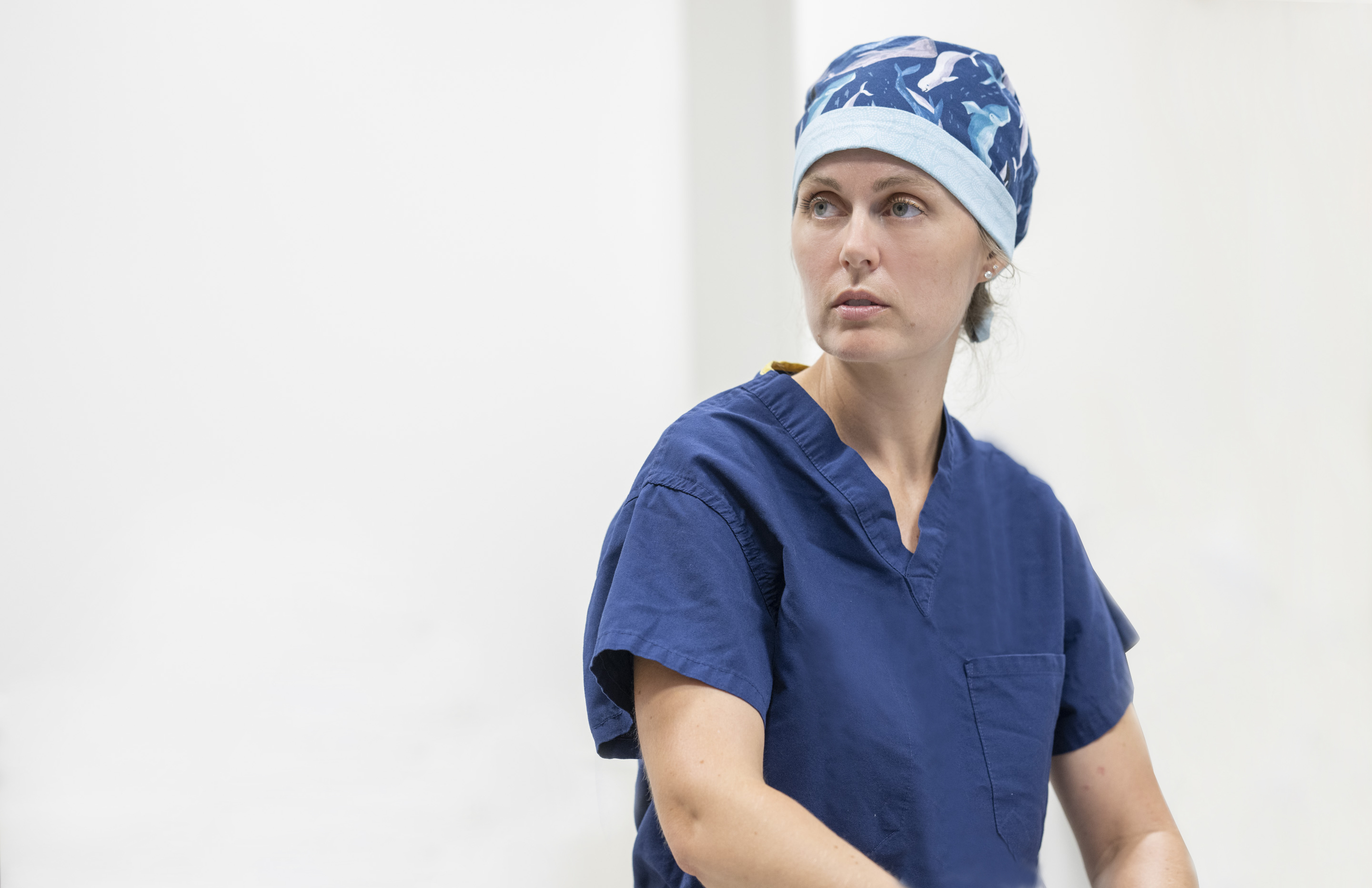 Photography by MUSC photographer Brennan Wesley
Photography by MUSC photographer Brennan Wesley
Nicole McCoy, M.D., an alumnus of the UAB Heersink School of Medicine Department of Anesthesiology and Perioperative Medicine, credits her training at UAB for developing her into the physician she is today.
McCoy completed her anesthesia residency training at UAB in 2018. After finishing her CA3 year as chief resident, she moved to Jacksonville, FL, to complete a pediatric anesthesia fellowship through the Mayo Clinic. She has since moved to the Medical University of South Carolina (MUSC), where she is an assistant professor in the anesthesia department, coordinator for pediatric burn anesthesia, and liaison with the solid organ transplantation team.
“I came out of fellowship with an exceptional amount of confidence based on my exposure and experience I had during residency,” McCoy says. “From a robust regional anesthesia experience to tons of exposure to obstetric anesthesia, I can’t think of an area or rotation where I didn’t constantly learn and improve and truly enjoy what I was doing.”
McCoy and her team, comprised of hematology and oncology physicians at MUSC, have gained attention for their project which uses a regional anesthesia technique to decrease pain and postoperative opioid consumption in patients who are bone marrow donors. This technique, known as a quadratus lumborum (QL) block, is often used for lower anterior abdominal surgeries, where two anesthetic shots are administered in between muscle tissue. When administering the QL block for bone marrow harvesting in the preoperative space, the patient experiences less anesthesia time.
“We were so impressed by the excellent pain control noticed subjectively and objectively in bone marrow donors who had undergone quadratus lumborum blocks. Although not officially studied, patient satisfaction was high, no refill requests for home oxycodone were requested, and no delayed return to work notes were requested," McCoy says. "Additionally, the number of patients who received any opioids decreased from 84.2% before implementation of the quality improvement initiative to 23.1% after implementation. The success of the project was not only personally gratifying, but also an exceptional outcome for safe and quality driven patient care.”
Use of the QL block mitigates barriers to recruiting bone marrow donors. One of the major concerns of potential donors is the pain associated with recovery from the procedure. By decreasing postoperative pain, decreasing recovery time, and reducing the number of opioids and narcotics needed in recovery, McCoy hopes that there will be an increase in donors.
In addition to her work with bone marrow harvesting, McCoy is working on a multicenter research project evaluating outcomes and anesthesia practices for pediatric burn patients. Since continuing her career at MUSC, she has kept in touch, published, and collaborated with several former colleagues at UAB. Most recently, she worked with Andrew Barker, M.D., and published an article in the journal Pediatric Anesthesia regarding postoperative delirium in pediatric patients.
“Collaboration with centers outside your own fosters intellectual curiosity and information sharing that can not only benefit the other institutions, but can be utilized to improve patient outcomes," she says. "My continued collaboration with friends and former colleagues, especially at UAB, has proven to be a successful partnership for research, education, and professional development.”